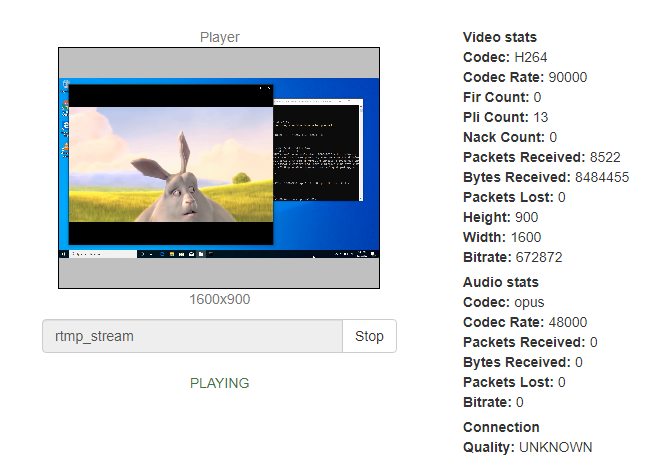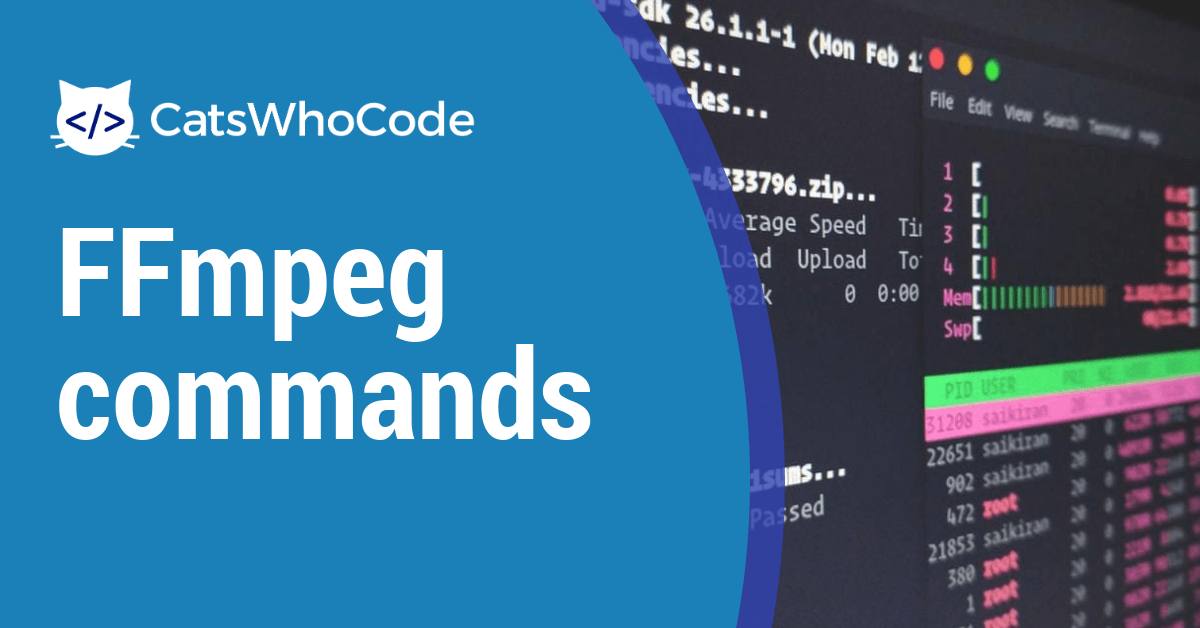

- #HOW TO USE FFMPEG TO STREAM AUDIO HOW TO#
- #HOW TO USE FFMPEG TO STREAM AUDIO MP4#
- #HOW TO USE FFMPEG TO STREAM AUDIO SOFTWARE#
- #HOW TO USE FFMPEG TO STREAM AUDIO FREE#
FLV file Input to MP4 file, copy codecs.Other stream types may auto-select their format based on the URL, similar to how this works for files. That means you'll have to use -f flv rtmp://SERVERIP:PORT/live/STREAMNAME for this. The most commonly used format for live streaming will be RTMP, but RTMP streams internally use the FLV format. To push over a stream use -f FORMAT STREAM_URL. To record it to a file use outputfile.ext almost any media type can be chosen by simply using the right extension. The output of ffmpeg can either be a file or a push over a stream url. Older versions of ffmpeg might require the equivalent old syntax -acodec aac -strict -2 -vcodec h264 instead. An encode to H264/AAC is done by using the option -c:a aac -strict -2 -c:v h264.

Copying is always done with the copy codec. You can copy a video track while only editing the audio track if you wish. Encoding to H264/AAC (options)įfmpeg allows you to change the video and audio track separately. The neat thing about using the copy option is that it will not re-encode your media data, making this an extremely fast operation. You can also only copy a specific codec like this: -c:v copy for video and -c:a copy for audio. Copying the codecs allows you to ingest a media file/stream and record it or change it to a different format. You only need to use -c copy to copy both the video and audio codecs. The copying of codecs couldn't be easier with ffmpeg. Lastly, you can use -c to choose all codecs in the file/stream at once. To specify the video or audio codec, use -c:v for video or -c:a for audio.
#HOW TO USE FFMPEG TO STREAM AUDIO FREE#
If not feel free to check out the ffmpeg documentation here. As H264/AAC are the most common codecs at the moment there's a good chance you already have these in your files, otherwise re-encoding them to H264/AAC with the default settings of ffmpeg will almost certainly give you what you want. CodecĪ huge array of options is available here, however we'll only cover two things: Copying codecs and changing codecs to H264 for video and AAC for audio. A special mention goes to the "-re" option to read a file in real-time: it'll allow you to use a media file as "live” source if you wish to test live streaming without having a true live source available. The input can be a file or a stream, of course you'll have to verify the input you're filling in exists or is a valid url, but that's how far the difficulty goes. Input is given by -i Input.file/stream_url.

Every ffmpeg command will follow the following syntax:įfmpeg input(s) output(s) Input
#HOW TO USE FFMPEG TO STREAM AUDIO HOW TO#
Luckily ffmpeg has a wide community and information on how to do something is easily found through your preferred search engine. The basics of ffmpegįfmpeg has too many options to explain easily to new users, so we'll go over the bare minimum required to encode and push streams with ffmpeg. We use it mostly as an encoder and pushing application ourselves it's deeply involved in all of our tests.

A big benefit to this is that it allows you to bypass known problems/issues that certain protocols or pushing methods have. If you have a media file/stream you'll be able to adjust the codecs however you want, change the media format and record it to a file or push it towards a media server. So what can ffmpeg do?Īnything related to media really: there's little that ffmpeg can't do. Luckily the basic settings are really forgiving for starting users, and as long as you keep the original source files you're quite safe from mistakes. The downside is that as you'll have to do this without a graphical interface, the learning curve is quite high, and if you don't know what you're doing you can worsen the quality of your video or even make it unplayable. It'll allow you to use it in automation on your server, which can be incredibly handy for any starting streaming platform. Ffmpeg is purely command line, which is both its downside and strength.
#HOW TO USE FFMPEG TO STREAM AUDIO SOFTWARE#
Ffmpeg, the swiss army knife of streamingįfmpeg is an incredibly versatile piece of software when it comes to media encoding, pushing and even restreaming other streams. To cover them would require several posts, so instead I'll just talk about the one I like the most: ffmpeg. There's a lot of good options out there on the internet, both paid and open source. This time I'd like to talk doing your own encodes and stream pushes.


 0 kommentar(er)
0 kommentar(er)
